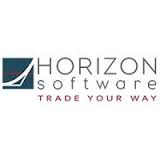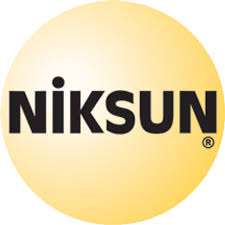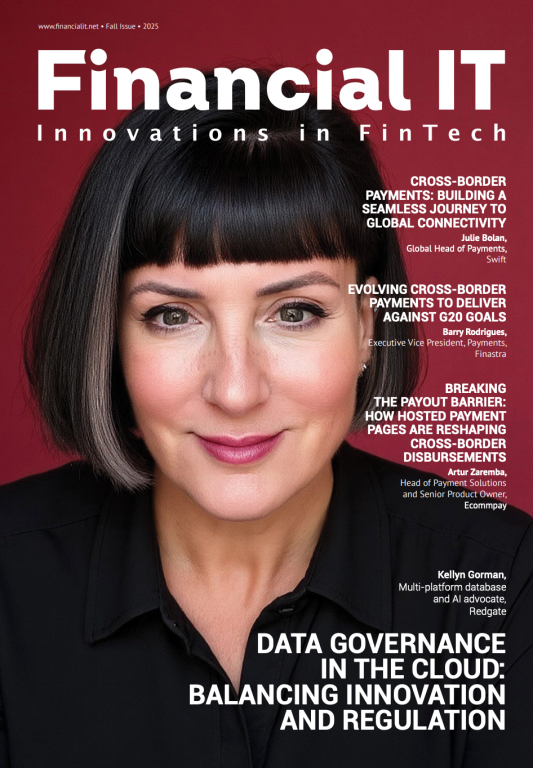Published
- 05:00 am

ING will propose to the 2017 Annual General Meeting (AGM) on 8 May 2017 to appoint Koos Timmermans and Steven van Rijswijk as members of the Executive Board. Upon appointment they will also become members of the Management Board Banking of ING. Koos Timmermans will become chief financial officer as of the date of the AGM, succeeding Patrick Flynn who has decided to pursue his career outside of ING. Steven van Rijswijk will become chief risk officer as of 1 August 2017, succeeding Wilfred Nagel, who will retire as of that date.
ING also proposes to the AGM to re-appoint Ralph Hamers, currently CEO of ING, to the Executive Board for a next period of four years. Ralph Hamers was appointed to the Executive Board at the AGM in 2013 and became its chairman and CEO on 1 October 2013.
Koos Timmermans (Dutch, 1960) is currently vice-chairman of ING's Management Board Banking and is responsible for ING Bank's operations in the Benelux as well as for aligning ING Bank's activities and balance sheet with new and upcoming regulation. Koos Timmermans started his career with ING in 1996. He was a member of the Executive Board of ING Group and chief risk officer from 2007 until 2011, when he was appointed to his current role. In 2014 he assumed responsibility for the bank's operations in the Benelux. Next to his new role as chief financial officer, he will remain vice-chairman of the Management Board Banking.
Steven van Rijswijk (Dutch, 1970) currently is global head of Client Coverage within ING Wholesale Banking. Steven joined ING in 1995 in the Corporate Finance team, holding various positions in the Mergers & Acquisitions and Equity Capital Markets space. In 2010 Steven became head of the Capital Structuring and Advisory team and in 2012 became global head of Corporate Clients. In 2014 he assumed his current role, becoming responsible for relationship management, transaction services and corporate finance for corporate clients and financial institutions in over 40 countries, while being a member of the Global Credit Committee and the Wholesale Banking Executive Team. Steven holds a master's degree in business economics from Erasmus University Rotterdam.
Patrick Flynn became a member of the Executive Board and its chief financial officer in 2009 following a career at KPMG and HSBC. Wilfred Nagel joined ING in 1991 and held several international roles across the bank. In 2011 he became its chief risk officer and in 2012 was appointed to the Executive Board.
Jeroen van der Veer, Chairman of the Supervisory Board of ING Group commented: "I want to thank both Patrick and Wilfred for their valuable contributions over the past years, transforming ING into a leading pan-European bank with the robust financial foundation it has today. Patrick played a fundamental role in our restructuring and divestment programmes while Wilfred was pivotal in diversifying ING's balance sheet, reducing the volatility of ING's capital and results. I am confident that Koos Timmermans and Steven van Rijswijk will successfully continue the acceleration of our Think Forward strategy, enhancing the customer experience and driving change. As part of a strong and dedicated team I am sure they will build on the success of ING as one of the digital leaders in the financial industry."
Related News
- 03:00 am

Horizon Software is the world's major provider of electronic trading and investment management technology. Today it has reported the extension of its long-term partnership with Edelweiss International Singapore (Pte) Limited, a subsidiary of Edelweiss Financial Services Limited, one of India's leading diversified financial services companies. Edelweiss will be using the latest version of Horizon's award-winning trading technology as a strategic element of their trading.
Navin Amarnani, Senior Vice President at Edelweiss Singapore, commented: "Horizon provides our trading teams with immediate access to a comprehensive range of features and the ability to execute sophisticated strategies and workflows. Their unique 'Trade your way' philosophy gives us powerful customization functions which significantly reduce our time-to-market for designing a trading strategy. Importantly, we are able to keep our proprietary models confidential and that's crucial for our business growth."
Edelweiss Singapore has been a client since 2014 and has moved quickly to install the latest version of the Horizon Platform for Automated Trading (HPAT) in order to benefit from the enhanced core features for basket order management, integrated pre-trade risk measures and algo strategy testing framework. HPAT is an event-driven solution and is the market leader for high-frequency and low-latency algorithmic trading.
Clement Pelletier, APAC Sales Director at Horizon, said: "Our long-term relationship with Edelweiss Singapore has seen a very successful deployment of HPAT and we have enabled Edelweiss Singapore to develop and execute advanced proprietary strategies. Edelweiss Singapore has ambitious plans for growth in the APAC region. We are very proud to be a core part of their technology strategy for the future."
HPAT, Horizon's flexible high-frequency trading solution enables buy-side and sell-side institutions to develop and deploy proprietary algorithmic strategies within their EMS. The platform handles cross-asset and cross-product trading strategies on cash and derivatives markets.
Related News
- 05:00 am

Dino-Software Corporation is an industry-leading provider in mainframe utilities, revealed version 2.3 of Universal Data Manager (UDM). It is designed to simplify and improve enterprise storage management from a centralized GUI to achieve optimum resource utilization within z/OS mainframe storage environments.
"We're very excited about releasing UDM 2.3 and the immediate benefit it can bring to organizations. We have extended the breadth and depth of support UDM offers to further streamline storage management with enhanced comprehensive, policy-based automation across the enterprise. Storage Administrators can focus on business-critical operations while UDM greatly simplifies or completely handles the routine tasks through automation," states Gary Bleemer, CTO of Dino-Software.
UDM's state-of-the-art architecture installs simply, without requiring a server, instantly establishing a single point of communication for all z/OS systems across the enterprise, empowering customers to manage, monitor, report on, and maintain storage with ease.
- Enterprise Level Management - Access to all enterprise z/OS storage from a central GUI without logging on to each system.
- Command and JCL Management - Single commands or jobs executed on all controlled systems, eliminating typical task and command library redundancies.
- Simple, Comprehensive Reporting – Extensive reports using SQL filtering can be generated, saved, and executed on multiple systems in a single request with consolidated results.
- Integrated Automation and Monitoring - Powerful message trapping and scheduling ensure storage management can be automated and enables proactive alerting when critical conditions occur.
Quick and Easy Installation - Ensures immediate utilization and ROI, avoiding the traditionally complicated install of other tools. Unlike many offerings, UDM integrates into existing security setups.
Related News
- 07:00 am

Worksoft, a leading global provider of automation software for high-velocity business process discovery and testing, today announced a new collaboration with IBM to offer a unified testing approach for SAP projects. In this new technology relationship, Worksoft will join together with IBM to provide end-to-end testing solutions that help large enterprises navigate the increasing complexity of change in their SAP and non-SAP environments and ensure successful project delivery. “Enterprises are always looking to increase quality, reduce costs and help mitigate risk in their DevOps environment,” said James Hunter, Program Director of Offerings, and IBM Cloud. “The collaboration between IBM and Worksoft can meet those needs by combining cloud technology offerings that promote continuous innovation, feedback and improvement.”
The combination of high-speed business process discovery and testing software from Worksoft along with IBM’s software testing capabilities for integration testing, performance testing and test service virtualization, will provide greater quality assurance for SAP and non-SAP applications across enterprise landscapes. Re-architected for the cloud, Worksoft Certify 10® now offers easier and larger deployments for industrial scale automation. Worksoft Analyze® automated business process discovery software enables both analysts and technical staff to capture actual business process execution, visualize and document processes, and analyze variations.
Today digitization is driving a steady stream of changes throughout complex enterprise landscapes. Companies want digital projects to be completed in a matter of days and weeks – today’s new digital reality. All this change brings with it increased technology risk. Beyond security and data protection concerns, it elevates the risk of business process failures.
“Industry leaders today must continually innovate as a rapid response to market demands,” said Shoeb Javed, chief technology officer, Worksoft. “Our advanced solutions combined with IBM’s capabilities for continuous software testing will help customers embrace technology change with greater assurance, all while accelerating project delivery and driving company-wide innovation.”
Related News
- 01:00 am

NIKSUN Inc. is the global leader in developing real-time and forensics-based cyber security and network performance monitoring solutions. It announced today it has been featured as the cover story for Silicon India’s special Enterprise Security edition. In it, Silicon India, a leading proponent of global technology news since 1997, has named NIKSUN’s technology the “industry’s most comprehensive solution for securing and maintaining dynamic network infrastructure.”
The article discusses NIKSUN’s revolutionary product suite as a full end-to-end enterprise security solution that simultaneously captures, records, stores, analyzes and alerts on all data traversing the network in a single appliance. It also calls NIKSUN’s solution “highly scalable and flexible,” touting its ability to do all of this, with zero loss, at “unprecedented rates” over 100 Gbps.
As quoted in the article, “Rather than simply capturing threats and slowdowns that we know, NIKSUN’s solution lets you see everything that occurs on your network, presenting problems immediately and intelligently.”
The article depicts several of NIKSUN’s recent advances, including NIKSUN’s Supreme Eagle and the recently released NikOS Everest. NIKSUN’s Supreme Eagle is now deployed in the Defense Information Systems Agency (DISA) and Department of Defense (DoD)’s Joint Regional Security Stacks (JRSS) initiative. According to Silicon India, “Supreme Eagle exhibits an outstanding performance by capturing all packets at more than 100 Gbps, with zero-loss, successfully keeping up with the full flow of data through JRSS gateways.”
The article also hails NIKSUN’s NikOS Everest as a “revolutionary intelligent data analytics platform,” calling it “a much simpler and smarter way to mine data.” NIKSUN’s NikOS Everest technology provides actionable and automated intelligence so that network security professionals do not have to sift through or drill down into mounds of data; rather, NikOS serves up the information automatically, dramatically reducing MTTR (mean-time-to-resolution). Silicon India reports that this “makes finding reports, filtering data, visualizing, exporting, and running analytics an effortless process, eliminating the need for ad-hoc special studies to obtain the required data.” Simply put, “NikOS Everest takes the guesswork out of discovering network performance problems or security breaches and threats, all within a single integrated platform, and without any compromise.”
Related News
- 07:00 am

Workday, Inc. is a leading provider of enterprise cloud applications for finance and human resources. Today the company reported that Dentsu Aegis Network, one of the fastest growing global media groups specializing in media, digital, and creative communications services, has selected Workday Human Capital Management (HCM) to help improve efficiencies and visibility into its employee base across the group’s global network of brands. Through Workday, Dentsu Aegis Network will empower its people to carry out HR-related tasks, access personal information, and provide its leaders with a single view of people-related information to better understand and manage talent across the business.
Headquartered in London and employing more than 35,000 people across 10 global network brands, and supported by additional specialist and multi-media brands, Dentsu Aegis Network provides some of the world’s leading marketers with best-in-class media, digital, and creative communications services. As the company expanded, Dentsu Aegis Network sought to replace a range of disparate technologies with a single, agile system that would foster better use of analytics and deliver actionable insights in the business for faster workforce decision-making, placing data at the heart of its people strategy.
With Workday, Dentsu Aegis Network expects to:
- Streamline efficiencies across the business making it clearer, quicker, and easier to get things done.
- Better leverage the skill sets and experiences of employees across brands and markets, opening up new opportunities in the digital economy for their clients.
- Build a high-performance culture, equipping leaders with direct access to insights into their teams.
- Better attract, develop, and retain talent with the ability to track and manage the entire employee lifecycle all in one people technology platform.
“We were looking for a system that reflected where we are heading as a business, something digital and pioneering that embodies the way we do business for our clients and powers our growth,” said Caroline Mellor, director of HR effectiveness, Dentsu Aegis Network. “Workday HCM enables us to create simplicity and efficiency for our people with a technology platform built for the cloud.”
Related News
- 05:00 am

New research findings reveal that technology systems and client reporting improvements are key business priorities for asset managers in 2017. According to the report, technology systems improvements are a key priority for 75% of asset management companies surveyed. A similar proportion (74%) said that client reporting was in focus for them with one in three (33%) expressing dissatisfaction with their current client reporting capabilities.
The survey, by Osney Media and BackBay Communications, found that currently less than half (49%) of the asset managers surveyed provide real-time reporting, e-reporting or mobile reporting capabilities for their clients.
“Institutional and retail investors have greater choice and expect greater control over their investments than ever before,” said Jonathan Wiser, Director at Osney Media, which commissioned the study and organizes TSAM London. “Their behavior and needs have changed as a result and asset managers have to make sure they are able to meet these needs. Our research reveals fairly widespread dissatisfaction with current client communications and it’s no surprise that client reporting, with a focus on digital, is firmly in focus as firms look to provide the information their clients need and in the format they want in order to improve the overall experience.”
Data management improvements could play a significant role in this. While data management practices are seen to be well utilized in some parts of the business, such as investment decision-making where 75% say it is well used, satisfaction is lower when it comes to its usage in client reporting and marketing. Only 45% believe data is well used for marketing purposes; this increases to just over half (54%) for client reporting.
Bill Haynes, CEO and founder of BackBay Communications, the financial services marketing and communications consultancy that conducted the research, said: “The way investors consume information has changed radically over recent years, particularly with the growth of digital communications, and asset managers need to make sure they don’t get left behind. The survey shows that social media, content marketing and e-marketing are all widely recognized as effective channels for communicating with clients and prospects but that only about half think their efforts are currently well integrated. Making better use of data, along with closer integration with sales and client service teams, is key to ensuring communications are relevant and consistent.”
Other findings from the report, which explores operational issues across all aspects of asset management, reveal that environmental, social, and corporate governance issues are becoming a more important part of the investment decision-making process, with 73% saying that these considerations are playing a greater role. The survey also found that artificial intelligence is seen as having the greatest disruptive potential for the industry in the coming years with nearly half (49%) identifying it. By comparison, only 12% said that blockchain would be the leading disruptive technology.
Related News
- 06:00 am

The latest market report from technology mergers & acquisition advisory firm, Hampleton Partners, shows vertical, ERP and information management applications as the most sought-after enterprise software acquisition targets. Strategic and financial buyers are increasingly looking to new segments such as artificial intelligence as mergers and acquisition targets.
The Enterprise Software M&A report, which covers mergers and acquisitions in the period between July 2014 and December 2016, reveals a 37 per cent boost to the total value of enterprise software M&A to $43.8 billion, even as deal flow during the second half of 2016 hit its lowest point in three years, falling to 412 deals, compared with 496 in the first half of the year. The trailing 30-day median revenue multiples remained steady at 3.1x while the median EBITDA multiple also remained strong, closing at 14.2x.
Top acquirers
Out of 2365 transactions in the trailing 30-month period, activity in the vertical applications sub-sector accounted for 29 per cent of all deal making, followed by activity in the enterprise resource planning (ERP) space and information management with 28 per cent and 18 per cent of all transactions respectively. Californian fleet management and mobile asset tracking systems specialist Trimble Navigation was the sector’s top acquirer in the last 30 months, with a total of 12 deals. Followed by Hollywood-headquartered cloud services and digital media provider J2 Global and Chicago-based private equity firm, Thoma Bravo, with 10 transactions each, then Microsoft, IBM and Los Angeles’ Marlin Equity Partners with 9 apiece. Meanwhile, 2016's top buyer was Apple, announcing six transactions for the full year followed by j2 Global, Thoma Bravo, with five deals each.
Internet buyers and AI momentum grows
Traditional software vendors are being challenged as buyers in the enterprise software space by consumer and Internet companies looking to boost their business-to-business credentials. This is particularly evident in newer enterprise technology sectors such as artificial intelligence, where Apple's acquisition of Indian and US machine learning startups Tuplejump and Turi stands out. Meanwhile, Salesforce plans on accelerating investment in AI despite pledging an M&A slowdown this year following its prolific buying spree in 2016.
Related News
- 06:00 am

Today Veeva Systems has announced new integration between Salesforce Marketing Cloud and Veeva CRM. As well as support for Salesforce Service Cloud with Veeva Vault. The companies are building upon their long-standing partnership to help life sciences deliver a more coordinated and consistent experience for healthcare professionals.
For the past 10 years, Veeva has been Salesforce’s preferred worldwide CRM provider for the pharmaceutical and biotech industry. Over this time, the two companies have extended their innovation and leadership positions in cloud and together now have more than 250 joint customers.
“Veeva has been an outstanding partner over the past decade, and Peter has been an outstanding CEO," said Marc Benioff, chairman and CEO at Salesforce. “Our expanded collaboration is a great next step for our joint customers and we look forward to working with Veeva into the next decade to help move the life sciences industry forward.”
“Salesforce is a cloud pioneer that has transformed how companies connect with their customers,” said Peter Gassner, founder and CEO of Veeva. “We’re excited to build upon our 10-year partnership and, together, help life sciences companies develop deeper relationships with healthcare professionals and create a better customer experience.”
Built on the Salesforce Platform, Veeva CRM is core to Veeva Commercial Cloud, which brings together customer data, compliant content, and multichannel engagement for life sciences companies to deliver the experience healthcare professionals have come to expect. The integration of Veeva CRM and Salesforce Marketing Cloud allows information to be shared between the two cloud solutions so that sales and marketing teams can have a complete view of customer engagement.
Marketing activities and data from Salesforce Marketing Cloud are available in Veeva CRM, while all Veeva CRM data and multichannel interactions, including Veeva CRM Approved Email, Veeva CLM, and Veeva CRM Suggestions, flow directly into Salesforce Marketing Cloud. Now life sciences customers that use both cloud solutions can have full visibility into face-to-face and digital interactions so they can deliver a cohesive and consistent experience to healthcare professionals.
Related News

Ivy Schmerken
Editorial Director at FlexTrade
North American broker-dealers and asset managers domiciled in the U.S. are watching their European counterparts gear up for compliance with MiFID II. see more









